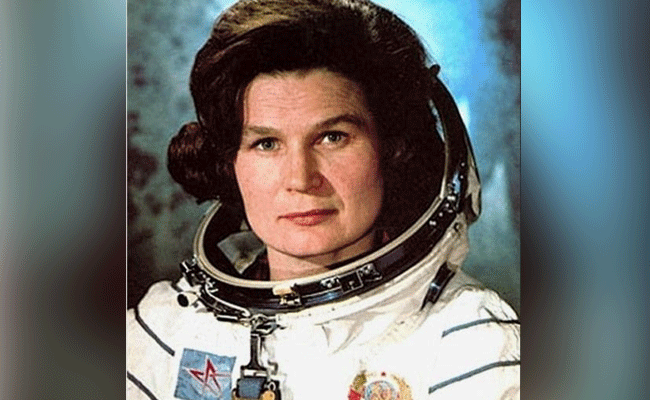The space sector is one of the most exciting and rapidly evolving industries in the world. From exploring new planets to developing innovative technologies, the space industry has always been at the forefront of human innovation. While the space sector has traditionally been dominated by men, women have made significant contributions to the industry over the years. In this article, we will explore the contribution of women to the space sector.
The Early Days of Women in Space
The early days of space exploration were dominated by men. However, women have always played a significant role in the industry. In 1963, Valentina Tereshkova became the first woman to travel to space. She spent nearly three days orbiting the Earth aboard the Vostok 6 spacecraft. Since then, women have continued to make significant contributions to the space industry.
Women in ISRO
ISRO has a long history of employing women in various roles, including scientists, engineers, and technicians.To name few, In 2017 that the organisation made headlines when it launched 104 satellites into orbit, with 20 of them being carried by a single rocket. The mission was led by two women scientists, Ritu Karidhal and Muthayya Vanitha.Nandini Harinath, a deputy operations director at ISRO, has been instrumental in several missions, including the Mars Orbiter Mission (MOM) and the Chandrayaan-2 mission. Also, Anuradha T.K. was a project director of the ISRO, She had worked on the launches of the satellites GSAT-12 and GSAT-10. She was the senior most female scientist at ISRO, having joined the space agency in 1982,and also the first woman to become a satellite project director at ISRO.
Women in NASA
NASA has been at the forefront of space exploration since its inception in 1958. Over the years, women have played a significant role in NASA's success. In fact, NASA's first female astronaut, Sally Ride, flew on the Space Shuttle Challenger in 1983. Since then, many women have followed in her footsteps and become astronauts. Today, women make up a significant portion of NASA's workforce and are involved in all aspects of space exploration.
Women in Space Research
Space research is an essential aspect of the space industry. Women have made significant contributions to space research over the years. For example, Dr. Mae Jemison became the first African American woman to travel to space in 1992. She was a mission specialist on the Space Shuttle Endeavour and conducted experiments on bone cells and weightlessness. Today, women continue to play a vital role in space research, conducting experiments and developing new technologies.
Women in Space Medicine
Space medicine is an essential aspect of space exploration. Women have played a significant role in space medicine over the years. For example, Dr. Peggy Whitson holds the record for the most time spent in space by an American astronaut. She has spent over 665 days in space and has conducted numerous experiments on the effects of long-duration spaceflight on the human body. Today, women continue to make significant contributions to space medicine, developing new treatments and technologies to keep astronauts healthy in space.
Women in Space Engineering
Space engineering is another critical aspect of the space industry. Women have made significant contributions to space engineering over the years. For example, Dr. Bonnie Dunbar is a former NASA astronaut who went on five space missions and has a Ph.D. in mechanical/biomedical engineering. Today, women continue to play a vital role in space engineering, designing new spacecraft and developing new technologies.
Women in Space Entrepreneurship
Space entrepreneurship is a rapidly growing field within the space industry. Women have been at the forefront of this field, starting their own companies and developing new technologies. For example, Dr. Anita Sengupta is the founder of Hydroplane, a company that develops high-speed electric propulsion systems for aircraft and spacecraft. Today, women continue to make significant contributions to space entrepreneurship, starting new companies and developing new technologies.
Challenges Faced by Women in Space
Despite their significant contributions to the space industry, women still face many challenges in this field. For example, women are still underrepresented in many areas of the industry, including engineering and leadership positions. Additionally, women often face discrimination and harassment in male-dominated fields like space exploration.
The Importance of Diversity in Space
Diversity is essential in any industry, including the space industry. Having a diverse workforce can lead to new ideas and perspectives that can drive innovation and progress. Additionally, diversity can help ensure that everyone has an equal opportunity to contribute to the industry.
The Future of Women in Space
The future of women in space is bright. As more women enter STEM fields { Science, Technology,, Engineering & Mathematics} and pursue careers in the space industry, we can expect to see even more significant contributions from women in this field. Additionally, as more attention is paid to diversity and inclusion within the industry, we can expect to see more opportunities for women and other underrepresented groups.
Women have made significant contributions to the space industry over the years. From exploring new planets to developing innovative technologies, women have played a vital role in every aspect of space exploration. While there are still challenges facing women in this field, we can expect to see even more significant contributions from women in the future as more attention is paid to diversity and inclusion within the industry.

Girish Linganna
Aerospace & Defence Analyst
Let the Truth be known. If you read VB and like VB, please be a VB Supporter and Help us deliver the Truth to one and all.
Tumakuru (PTI): Karnataka Home Minister G Parameshwara on Saturday said his recent remarks on the demolition of properties linked to those involved in narcotics trade were "misunderstood and misinterpreted".
His clarification follows remarks made two days ago on the government's uncompromising crackdown on the drug menace, including action against properties linked to foreign nationals allegedly involved in drug trafficking.
"It is unfortunate. It is taken in the wrong sense. I didn't mean that tomorrow itself I am going to send bulldozers and demolish the houses. That was not my intention. It was wrongly taken," he told reporters here.
Responding to Congress MLC K Abdul Jabbar's question in the legislative council on the growing drug menace in Bengaluru, Davangere and coastal districts, the minister on Thursday detailed the extensive enforcement measures initiated since the Congress government assumed office.
Pointing to the involvement of some foreign nationals, the minister had said, "Many foreign students from African countries have come to Karnataka. They are into the drug business. We catch them and register cases against them, but they want the case to be registered because once the case is registered, we cannot deport them."
"We have gone to the extent of demolishing the rented building where they stay," he had said.





